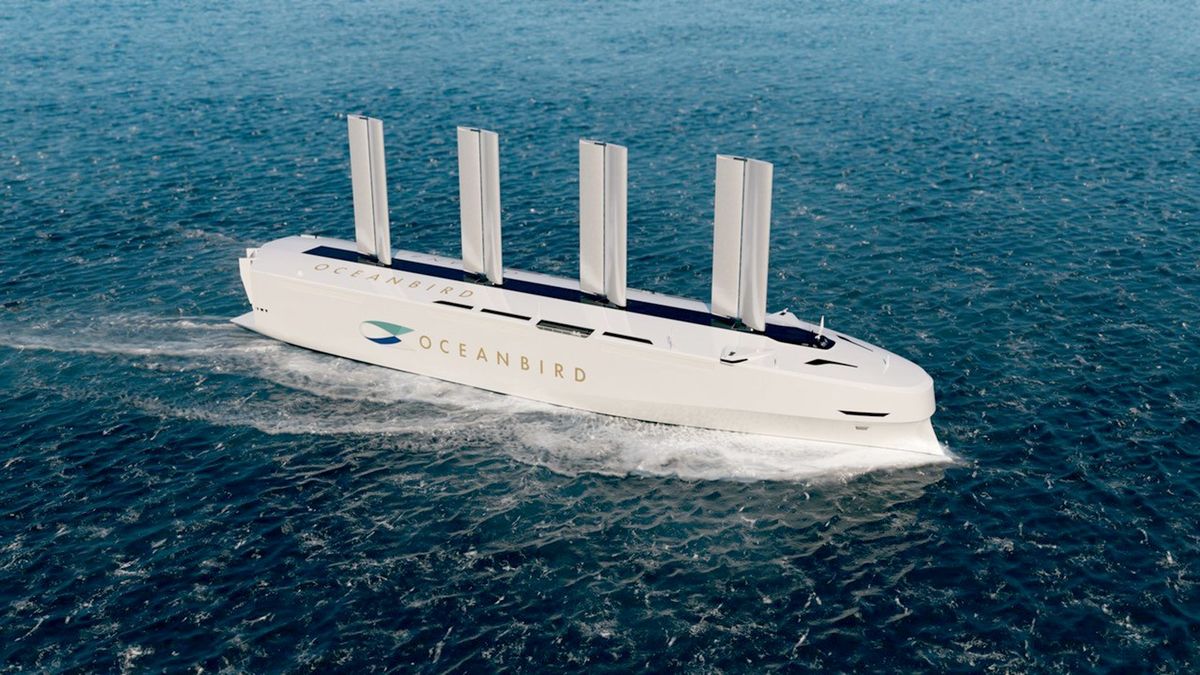To protect the ocean, some ships harness renewable energy

Ever wonder how some toys get to your doorstep? Many travel across the ocean in ships powered by fossil fuels, such as coal and oil. As ships burn fossil fuels to propel themselves, they release carbon dioxide (CO2). The ocean absorbs about 30% of human-caused CO2 – at a cost.
“When seawater takes up carbon dioxide, it alters the chemistry of the water,” a process called ocean acidification, says Liz Perotti, education and outreach coordinator with the National Oceanic and Atmospheric Administration’s Ocean Acidification Program.
One effect: A mineral called calcium carbonate – an essential building block for many sea creatures – becomes less available. So animals such as crabs, clams and some zooplankton must expend more energy to create and maintain their shells and skeletons, Perotti says. Acidification can also make it harder for some fish to navigate their environment, find food and avoid predators.
These marine animals are a critical part of our food web. “One example are pteropods, which are tiny snails with winged feet that help them swim,” says Perotti. “They are very sensitive to acidification and an important food for fish [that] people depend on, like salmon.”
Human-caused CO2 emissions – from shipping goods, driving cars and other everyday activities – are a problem because they’re rising so quickly, Perotti says. These emissions differ from natural CO2 (created through animal and plant respiration, volcanic eruptions and other life processes), which is present in our atmosphere at much lower levels.
According to the International Maritime Organization, shipping generates close to 3% of all global greenhouse gas emissions (including CO2). That’s more CO2 than the entire country of Germany emits.
To reduce shipping’s impact on the environment, some companies are turning to renewable energy. Sailcargo, based in Costa Rica, is building Ceiba, a wind-propelled ship that will eventually carry 250 tons of goods. Compared with the largest container ships, which can transport more than 150,000 tons, Ceiba is “quite a small drop in the ocean,” says Jeremy Starn, Sailcargo’s media manager.
But enthusiasm for wind power is growing. “Utilizing wind as an energy source for any kind of ship is starting to be taken more seriously now,” Starn says. With Ceiba expected to be ready in 2023, Sailcargo recently purchased another sailing vessel, Vega, to begin shipping cargo sooner.
French company Airseas created a different way to capture wind energy: a giant kite flying high above the ocean. The technology, called Seawing, includes an automated system that controls the wing’s operation, tracks weather and proposes the best route to the captain.
Seawing can be installed on existing ships, and Airseas is focusing first on the biggest ones – tankers, container ships and other large vessels.
“These ships are responsible for 85% of the (industry’s) greenhouse gas emissions,” says Stephanie Lesage, general counsel and corporate secretary at Airseas. Using Seawing lowers ships’ emissions and fuel consumption by 20% on average.
When it comes to reducing reliance on fossil fuels, “there is no solution right now” other than renewable energy, says Lesage. Wind power makes sense because it’s “unlimited, abundant and free.”
In Sweden, AlfaWall Oceanbird will soon test its own wind-powered solution. Oceanbird’s wing rigs are designed to stand upright, and they function more like airplane wings than traditional sails. The wings fold to save space when ships pass under bridges or encounter bad weather.
With Oceanbird, ship captains can adjust routes to fit their goals. “If you’re willing to change the course so you have the wind from the right direction, you will get more power or force out of the wing sail,” says Niclas Dahl, managing director of AlfaWall Oceanbird.
The company plans to launch a fully wind-propelled ship in 2026. In the meantime, it’s working to install Oceanbird wings on existing ships. “If we’re going to change the world, we need to change the 90,000 vessels that are already sailing today,” Dahl says.
Besides lowering emissions, wind-propelled ships also help the ocean by reducing noise pollution. Unlike on a conventional container vessel, sailing on Vega is quiet, says Starn. “You see dolphins swimming alongside you because they’re not afraid of the engine. It’s a really humbling experience to be connected so closely to nature.”
In Lesage’s mind, renewable energy is the only way forward. “We owe everything to nature,” she says, “so we have to respect it.”